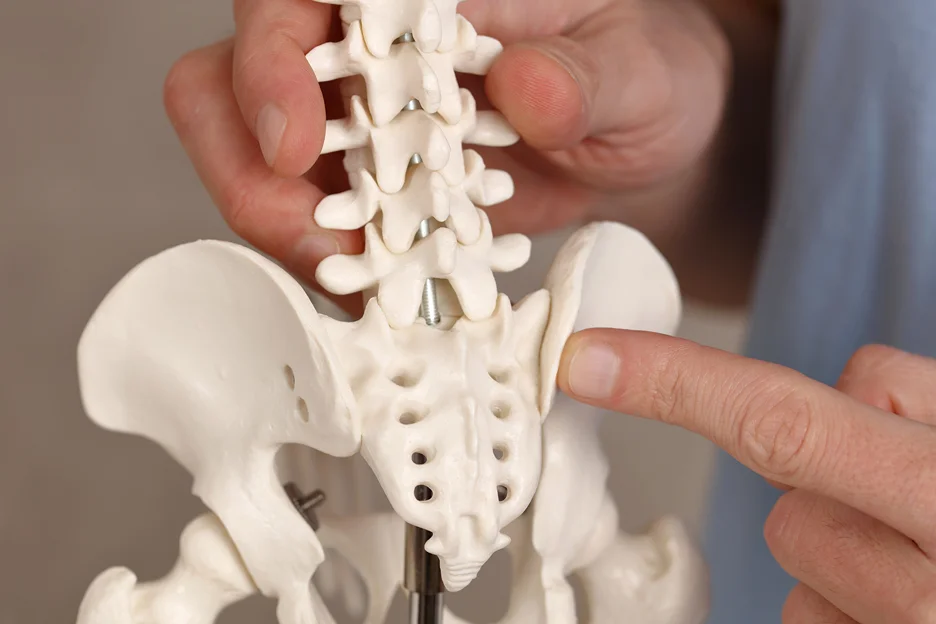Understanding, Diagnosing, and Treating Sciatica-Induced Hip Pain Through Modern Healthcare Platforms
Sciatica refers to pain caused by irritation or compression of the sciatic nerve, which is the largest and longest nerve in the human body running from the lower back down through the hips and buttocks and into each leg. Sciatica most commonly causes severe, shooting pain in the buttocks, back of the thigh, calf, and foot. However, sciatic nerve pain can also radiate upward into the hip area leading to hip pain.
With the growing emphasis on patient-focused healthcare and increasing accessibility of medical expertise through online platforms like Kaly, it becomes crucial to spread awareness about common health conditions like sciatica and hip pain.
This article will provide an in-depth understanding of the causes, symptoms, diagnosis and various treatment approaches for sciatica-induced hip pain. Read on to learn more about managing and finding solutions for this agonizing yet common nerve condition.
Understanding Sciatica and Hip Pain
The sciatic nerve originates in the lower back from the spinal cord and travels through the pelvis and down each leg. Any irritation or compression of this largest nerve in the body can cause sciatica leading to symptoms like a sharp, shooting pain usually only on one side of the lower body.
While the pain generally radiates from the lower back through the back of thigh and calf, sciatica can also cause pain in the hip area. Referred to as sciatica hip pain, it can range from a mild ache to a sharp, burning sensation making it difficult to walk, sit or even lie down. Differentiating sciatica pain from general hip pain can help determine appropriate treatment. Sciatic pain usually runs along the path of the nerve down the leg, whereas hip pain will be more localized. Understanding the causes and contributing factors can also aid diagnosis.
Common Causes of Sciatica Hip Pain
| Cause | Description |
| Lumbar herniated disc | Pressing on the sciatic nerve root |
| Degenerative disc disease | Discs becoming less flexible |
| Spinal stenosis | Narrowing of spinal canal putting pressure on nerves |
| Spondylolisthesis | Vertebral displacement stressing nerve roots |
| Piriformis syndrome | Spasms or tightness of the piriformis muscle |
| Trauma from accident | Direct injury to the sciatic nerve |
| Pregnancy | Added weight and pressure on the nerve |
Severity and duration of pain can vary greatly depending on the specific cause. Symptoms may last a few days or become chronic without proper treatment.
Anatomy and Pathophysiology
To understand the underlying mechanisms causing pain, it is important to look at the anatomy of the structures affecting the sciatic nerve.
Sciatic nerve dysfunction or impingement at any point along its path can trigger symptoms. In the lower lumbar spine area, deterioration or slippage of the intervertebral discs can irritate nerve roots. Further down, tightness or spasms of the piriformis muscle located deep in the buttocks can also compress the nerve.
The sciatic nerve passes right next to the hip joint, so any inflammation or injury in this area indirectly places pressure on the nerve. Movements requiring internal hip rotation or resistance against a tightened piriformis muscle can also stress the sciatic nerve.
Above the knee, the nerve divides into the common peroneal nerve and the tibial nerve. Entrapment or compression of the peroneal nerve higher up can manifest as pain perceived around the hip and buttocks. Understanding the complex anatomy involving the sciatic nerve and connected muscles, bones, and joints helps in evaluating the potential causes of radiating hip pain.
Sciatica Hip Pain Symptoms and Diagnosis
Patients suffering from sciatica typically complain of pain starting in the lower back or buttock that radiates down the back of the thigh and leg on one side. But symptoms can vary greatly among patients. Recognizing some common signs and patterns can aid diagnosis:
- Sharp, shooting, burning pain in the buttocks, back of hip area or thigh
- Difficulty moving the leg or pain when coughing or sneezing due to nerve compression
- Numbness or muscle weakness in the leg, foot or buttocks
- Tingling or “pins and needles” sensations along the nerve’s path
- More constant dull ache with intermittent episodes of severe pain
Hip pain resulting from sciatica will usually be accompanied by these nerve-related symptoms down the leg. In cases of acute trauma, onset of pain can be sudden. But typically pain starts gradually and worsens over time. Keeping a record of symptoms and pain factors like sitting or walking can help the health provider in making an accurate diagnosis.
Medical history helps identify risk factors like occupation-related injuries or trauma from accidents. Physical examination tests range of motion, muscle strength, reflexes, and sensation along the nerve path. The straight leg raise test is commonly used to assess nerve mobility. Diagnostic tests like X-rays, CT scan or MRI also help pinpoint spinal abnormalities or nerve impingements that could be causing pain.
Treatment Options

Effective treatment for sciatica hip pain depends on properly diagnosing the underlying cause. Conservative treatments are usually first line and can provide relief in many mild to moderate cases. These include:
| Treatment | How it works |
| Anti-inflammatory medicines | To reduce swelling around nerve |
| Hot and cold therapy | Alternating heat and ice provides pain relief |
| Stretching and exercises | Improve flexibility of muscles and joints |
| Massage therapy | Relieves muscle tightness and spasms |
| Chiropractic adjustment | Corrects spinal and pelvic misalignments |
| Acupuncture | Releases tension and improves nerve activity |
| Epidural steroid injection | Administered around inflamed nerve |
For severe or persistent sciatica, doctors may consider surgical options like a microdiscectomy to remove portions of herniated disc pressing on the nerve. Lumbar laminectomy is another surgery that enlarges the spinal canal space to decrease pressure on the nerves. Minimally invasive endoscopic procedures are also gaining popularity.
Newer, non-surgical treatment options aim to stimulate and relax overactive nerves using electrical currents or pulses. Online exercise therapy programs provide access to stretches and customized sciatica workouts. Choosing the right options should involve shared decision-making between doctor and patient depending on symptoms, lifestyle and treatment goals.
Role of Physical Therapy
Physical therapy plays a key role in conservatively managing and treating sciatica hip pain through a customized exercise program. PTs perform a thorough evaluation to identify impaired movements and weaknesses. They can utilize techniques like massage, ice or heat therapy, laser treatment along with targeted exercises.
Some common goals of physical therapy for sciatica patients include:
- Pain relief and anti-inflammatory modalities
- Releasing tight muscles like the piriformis putting pressure on nerves
- Strengthening core, back, glute and leg muscles for added support
- Stretches and proper movements to increase range of motion
- Improving balance, gait, and posture to avoid falls or further injury
- Ergonomic advice like using lumbar support during sitting
Low-impact aerobic exercises, Pilates, and yoga can also benefit patients by building strength and stamina in the back, hip, and core areas. Activity modification training helps prevent future flare-ups. Close follow up and communication with the physical therapist ensures long-term recovery.
Preventive Measures and Self-Care
Making certain lifestyle adjustments and using self-care strategies can help prevent and manage sciatica episodes along with medical treatment. Some tips include:
- Maintaining good posture during sitting and standing
- Using ergonomic chairs or lumbar support cushions
- Avoiding high heeled shoes which strain the back
- Losing excess weight to reduce pressure on the spine and nerves
- Practicing safe movements and bending at the knees when lifting
- Doing light stretching or yoga for flexibility
- Using heating pads or ice packs for pain relief
- Getting sufficient rest to allow muscles and nerves to heal
Being aware of habits or activities that aggravate sciatica pain like long periods of sitting or climbing stairs can go a long way in avoiding triggers. Quitting smoking also facilitates recovery. Listening to one’s body and not pushing through severe pain helps prevent further injury.
How Platforms like Kaly Assist
Digital healthcare platforms are making it easier for patients to connect with medical experts for evaluating symptoms like sciatica and hip pain. Kaly facilitates online video consultations with experienced physiotherapists, orthopedic specialists and pain management physicians.
Patients can find doctors based on their condition, read verified reviews, schedule appointments online, and access telemedicine services from the comfort of home. Such virtual visits are extremely convenient for chronic pain patients or the elderly who find commuting difficult.
By bridging communication gaps and distance barriers in healthcare, platforms like Kaly are improving outcomes for patients suffering from sciatica and related hip pain.
You can sign up here to start your journey with Kaly today!
Conclusion

Sciatica can be an extremely painful condition causing symptoms like sharp shooting pain from the back through the hip and down the leg. Recognizing early warning signs and differentiating it from general hip joint pain allows for prompt diagnosis.
While many mild cases can be treated conservatively with anti-inflammatories and physical therapy, severe sciatica may require specialist care. Surgery or advanced techniques should only be considered when conservative treatment fails to provide relief after a reasonable trial.
Patients are encouraged to seek help from qualified physiotherapists and doctors either in-clinic or through telehealth platforms. Self-diagnosis using online information can be dangerous. Customized treatment plans involve shared decision making between healthcare experts and patients for optimal recovery.
